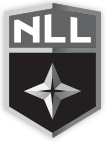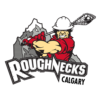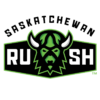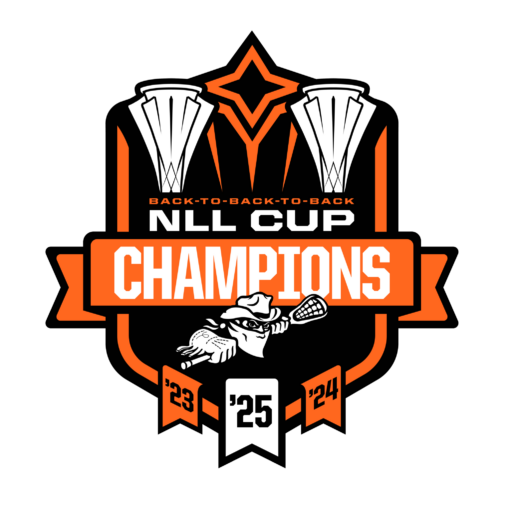Box lacrosse has been around for a long time, played by some of the most talented and dedicated athletes from Canada, Native American reservations, and the United States. Pockets of play, primarily in the summer, sprouted with the development of leagues pretty much kept lacrosse to the rich communities ultimately battling for their championship levels from pee-wee to pro. There were niche leagues in the U.S. and Canada, but they would come and go over the years.
It Began with a Stick and Ball
Steve Donner, former executive director of sales and marketing for the Buffalo Sabres, had followed the game of box lacrosse as a teenager back in the ’70s. Hampered with a bad hip, Donner spent his summer on crutches, learning to catch and throw with a friend while he sat on a tree stump in his front yard. This was the start to a long and successful relationship with the game of lacrosse.
Little did he know, 20 years later, he would play an instrumental role in the formation of the Buffalo Bandits.
After attending several summer games with his friend, watching the Iroquois team play in Rochester, he was hooked on the game because it was so exciting with its non-stop action and tough physical game. Being a fan for five years, Donner attended games of the newly formed, but short-lived, Rochester team that was a member of the then National Lacrosse League out of Canada. The latter will have a significant part at the end of this story.
“I went to every game that summer, and crazy enough, the star of that team was Rick Dudley, former Sabre, and head coach. He was playing in the offseason from hockey, and he was the combination of Gordie Howe and Wayne Gretzky in that league,” Donner said from his home in Greenville, South Carolina, where he is now the president and owner of the ECHL’s Greenville Swamp Rabbits.
“He would score five goals a game and get in three fights, and he had one of the hardest shots I’ve ever seen. He was just incredible. That Rochester team won their first championship over John Grant Sr.’s team from Philadelphia, but sadly moved away.
“Needless the say, that season just solidified my passion for the game forever.”
And what about that game?
Back in the mid-1980s, box lacrosse was the perfect game to be elevated onto the main stage of large NHL arenas in the northeast United States. As the story is told, this enhanced boxed game, which would be played in the winter months, was drawn up on a cocktail napkin at a New York Knicks basketball game between two exceptionally talented and crafty entrepreneurs by the name of Chris Fritz and Russ Cline.
The game would be played on synthetic turf (which covered the ice), smaller nets, a 30-second shot clock, continuous music, and a very exciting public address announcer who would hype the crowd and do a little play-by-play in between. This was an event with two teams playing five aside with two goaltenders.
They created the Eagle Box Lacrosse League in 1986, which began play in January 1987 with four teams that would be placed in Philadelphia, New Jersey, Washington, and Baltimore. Teams played four home games and four away games.
Fritz and Cline ran the teams, which included players, coaches, and general managers. In addition, they named the teams, chose the colors and uniforms, and managed travel and support. The marketing slogan, “We’ll sell you the whole seat, but you’ll only need half of it” was their claim to fame.
And it all worked beautifully. The arena operators played host and provided logistics. At the end of the night, a split in revenue was made.
More teams were added and in 1989, the troupe was renamed as the Major Indoor Lacrosse League. Success and attendance growth continued, with more regional northeast cities in the focus of Fritz and Cline.
The Birth of the Bandits
In the early ’90s, the Sabres organization started to investigate options to fill dates inside Memorial Auditorium. Coupled with the fact of developing a new arena down the street, the club needed some options to keep the building busy.
Former Sabres vice president George Bergantz led the charge with Donner and Seymour H. Knox IV, assistant to the president.
“If we were going into a new arena, we needed more programming. We didn’t want to wait until the new building was ready. We wanted to experiment as we continue in the Aud,” Donner said. “We were challenged to look at everything. Being young and aggressive I was out looking at everything, even indoor rodeo.”
“Steve was very interested in this whole idea [of box lacrosse] and talked about it,” Bergantz, who still lives in the area as the vice president of The Benchmark Group, a commercial real estate company, said. “He opened up the contacts with Cline and Fritz, and at the same time, I am working with the project for the new arena and one of the things we needed was more events, not just 40 hockey games,”
With the love of box lacrosse tugging at his heartstrings, Donner called his counterpart with the Detroit Red Wings when he heard the MILL had a team, the Turbos, in the city.
It turned out the Red Wings were a part of the Turbos as “promoters of the event” and proceeded to inform Donner of the early success they were having. That weekend, he went to a game in Detroit and was blown away.
He had to be what with seeing twins Paul and Gary Gait play.
“They were absolutely amazing,” he said.
“So I was completely sold and pushing it hard. George and Seymour IV liked it too. But we had to sell it to the Knox brothers and ownership. To my shock, it was not a slam dunk and ownership turned it down. I went back to George and said my gut feeling this box lacrosse venture is the very best opportunity for us and if the Knoxes don’t want to do it, should we consider doing it ourselves?”
George was a big champion of this project and approached management again, with the indication he and Donner might run the events on their own. The ownership reversed their thinking and approved the box lacrosse project.
“At that point in time, they [Fritz and Cline] were the promoters. They provided the event, which was two teams playing box lacrosse. Chris and Russ said, ‘We think we are going to call this team the Buffalo Bandits.’ And we said OK. They designed the uniform and logo as well.”
Bandits Opening Night
“Opening night [January 4, 1992] was quite memorable [a 21-17 loss in front of 9,052 people]. The last 5,000 tickets were sold that night before the game. There was a line across Terrace Street going up the block and into downtown,” Bergantz said. “We had to hold the start of the game for 40 minutes because the lines were so long with people purchasing tickets and getting into the building.”
At the end of the night, both Donner and Bergantz were amazed at how great things went.
“We had the biggest walk-up in the history of the Sabres organization, selling five thousand tickets. People were just beside themselves,” Donner said. “The game was so exciting. End to end action, music and Chris Swenson doing the play-by-play on the PA. The game just took off like a rocket.
“One of the most exciting bucket list memories in my sports career.”
While the team went 0-3 out of the gate the first season, Cline and Fritz fired head coach Bob “Buff” McCready (one of Donner’s favorite goalies back in the 1970s) and replaced him with the late great Les Bartley.
The team proceeded to win their five remaining regular-season games, filling the Aud to the rim with 16,325 fans and went 3-0 in the playoffs to win the MILL Championship.
“It was a sensation. It really was a remarkable thing. And the Bandits live on,” said Bergantz.
And Then…
Donner’s love affair with the game continued and so did his successful career. After helping launch the Tampa Bay Lightning franchise with their VP of sales and marketing, he purchased the Rochester Americans hockey team from the Knoxes. Following the War Memorial’s renovation and expansion a few years later, Donner established another relationship with Fritz and Cline and introduced the Flower City to the Rochester Knighthawks. Too, that franchise was an immediate success and won two championships during his tenure.
In 1997, Fritz and Cline dissolved the MILL, allowing an ownership group lead by Donner to establish a new league where each team would run their entire operation. Fritz and Cline retained two franchises in the agreement.
And back to the part of the story when Donner spent a summer in the ’70s following the new Rochester team of the Canadian NLL. When the new independent ownership of the lacrosse teams was established, Donner drew back to his roots and named the newly formed group, the National Lacrosse League.
And to this day, Steve Donner has never been acknowledged for his contribution to developing the new NLL. Hopefully, he will one day be inducted to the NLL Hall of Fame.















